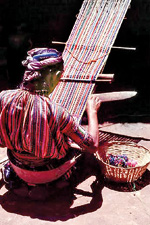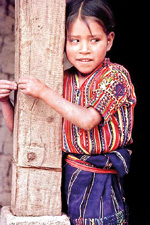Weaving a tale of Guatemalan women and their craft
View(s):In the highlands of Central America, ringed by volcanic mountains, the women of Guatemala carry on a tradition of weaving and textile-making that can be easily traced to their Mayan heritage. Their colourful linear patterns and fringes can be found in relief carvings that date back to 600 AD. The diverse design patterns and colours also depict their regional identity. They weave on a backstrap loom that is native to the Americas and their specific colours and patterns have been associated with the regions of Guatemala for centuries.
 ‘Threads of Time’, a photographic exhibition on the weaving traditions of the indigenous women weavers of Guatemala by architect and designer Tilak Samarawickrema will be on at the UNICEF Country office, 3/1 Rajakeeya Mawatha, Colombo 7 on July 11 from 10 a.m. to 4 p.m.
‘Threads of Time’, a photographic exhibition on the weaving traditions of the indigenous women weavers of Guatemala by architect and designer Tilak Samarawickrema will be on at the UNICEF Country office, 3/1 Rajakeeya Mawatha, Colombo 7 on July 11 from 10 a.m. to 4 p.m.
 Tilak Samarawickrema worked in Guatemala as a UNICEF consultant in 1990 and wrote the Guatemala Handicraft Report. As part of his assignment he also did a photographic documentation for the “Chance For A Child Program.” Hand woven textiles are synonymous with the culture and craft traditions of women in Guatemala. Due to the demands of child care and other domestic tasks the women are able to devote only one to three hours per day for weaving.
Tilak Samarawickrema worked in Guatemala as a UNICEF consultant in 1990 and wrote the Guatemala Handicraft Report. As part of his assignment he also did a photographic documentation for the “Chance For A Child Program.” Hand woven textiles are synonymous with the culture and craft traditions of women in Guatemala. Due to the demands of child care and other domestic tasks the women are able to devote only one to three hours per day for weaving.
In 1986 UNICEF began sponsoring projects for a small number of women to help raise their standard of living by reintroducing traditional weaving. By 1990, over 5000 women had become part of the Guatemalan textile programme assisted by UNICEF.
Hand weaving by rural women of Guatemala, not only serves a practical purpose to clothe themselves and their families, but also is an indispensable income generating activity.
For some it is the sole source of income.


